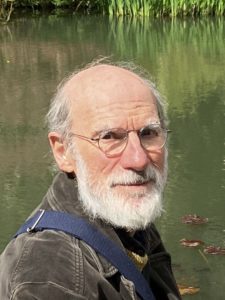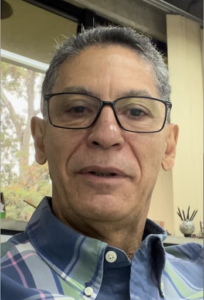John Beverly
University at Buffalo, USA
I am presently an Assistant Professor at the University at Buffalo (UB), Co-Director (alongside my colleague Barry Smith) of the National Center for Ontological Research, and Co-Lead developer (alongside Alan Ruttenberg) of the Basic Formal Ontology. Prior to this appointment, I worked at the Johns Hopkins University Applied Physics Laboratory as a senior ontologist, leveraging my knowledge representation skillset to support traditional machine learning workflows.
My research is at the intersection of ontology/knowledge graph engineering, formal logic, and ethics, with applications to representations of infectious disease, top-level ontology modeling, and pedagogy. I have worked with numerous groups curating, creating, and applying knowledge representation artifacts to semantic interoperability challenges. For example, during the height of the pandemic, I led or supported ontology-driven efforts to identify vaccine and drug treatment options for COVID-19, update the widely-used Infectious Disease Ontology, develop the Virus Infectious Disease Ontology extension, and develop the Coronavirus Infectious Disease Ontology which extends from it. I have since led projects developing ontologies and knowledge graphs for domains covering international occupation coding standards, bias in large-language models, and narrative identity as exhibited by older adults, among others.
-
Tracing Space in Time
Spatiotemporal regions in Basic Formal Ontology (BFO) are combinations of both temporal regions and spatial regions. The former represents when processes occur; the latter where entities participating in those processes are located. Spatial regions are quite useful. They are, for example, what maps and coordinate systems are intended to be about. Nevertheless, this class raises modeling challenges, namely, the BFO-2020 definition is susceptible to counterexamples, spatial region seems incorrectly classified as an independent continuant, and it is often confused with information about space. In this talk, I will canvas strategies for repairing these issues in BFO, ranging from: modifying the spatial region class itself; replacing spatial region with instances of “space”, “time”, and “spacetime”; leveraging BFO’s continuant fiat boundary and site classes to model space without spatial region. I will close by comparing these strategies in terms of coherence, as well as implementation costs and expected extensibility for users.
Antony Galton
University of Exeter, UK

Antony Galton was formerly Reader in Knowledge Representation in the Department of Computer Science at the University of Exeter, UK. In this capacity he conducted research in spatial and temporal representations and reasoning for AI and GI Science, with particular emphasis on ontological questions concerning states, processes, and events. Following his retirement from this post in 2018 he has been directing his attention to the more philosophical aspects of these topics.
-
Metaphysics – Ontology – Science: An Uneasy Partnership?
In this talk I will raise some questions about the relationships between metaphysics, ontology, and science, both their current state and as we might ideally wish them to be. I shall illustrate the issues involved in relation to certain key topics such as the treatment of space, time, and cause, and the nature and role of abstract objects such as numbers.
José M. Parente de Oliveira
Aeronautics Institute of Technology, BR

He holds a Master’s and Ph.D. in Electronic Engineering and Computer Science from the Aeronautics Institute of Technology (ITA). He coordinates the Big Data Science Laboratory and the Complementary Data Science Training Program at ITA, served as Head of the Computer Science Division of ITA (equivalent to Centers or Colleges) until March 2020, is a professor in that division, and a collaborating researcher at “The National Center for Ontological Research (NCOR)” at The State University of New York – University at Buffalo, which aims to advance the quality of ontology research. The geographical context in which ITA is located has provided personnel training to work in various sectors of society, notably educational, governmental, business, and military. In addition, this context, which includes a consolidated Science and Technology hub, comprising the Department of Aerospace Science and Technology (DCTA), the National Institute for Space Research (INPE), and a vigorous industrial hub that includes EMBRAER and several other companies, has favored the conduct of research based on problems of great practical relevance. He has experience in the area of Computer Science, with emphasis on Ontology, Big Data, and Linked Data/Semantic Web. Among other professional activities, he has worked as a visiting researcher at The State University of New York – University at Buffalo, as a professor at the Institute of Airspace Control (ICEA), and as an International Consultant for the International Civil Aviation Organization (ICAO), a United Nations agency. He has published numerous articles in conference proceedings and journals. He has supervised 23 master’s dissertations and 11 doctoral theses.
-
The Role of Ontologies in Data Integration
Data integration is considered a recurring problem in data management, which is seen as a more significant challenge nowadays. For instance, It is estimated that 50 to 80% of a data scientist’s time is dedicated to manipulating, integrating, and preparing data for effective use [1]. Also, as many companies and organizations have huge amounts of legacy data, in many situations, they need to integrate data from different sources and formats. For that, data engineers use database management commands to join and query tables, in which such commands are several pages long, requiring deep knowledge of the database structures. But despite all their effort they have not succeeded in the required data integration, because only using the technical tools is not enough. I argue here that they need a more representative abstract model that organizes elements of data and how they relate to one another and to the properties of real-world entities, in order to accomplish the integration purpose. In this talk, I will present the research we have been carrying out to integrate databases, in which ontologies play an important role. Firstly, I will discuss data integration in the context of the OnTop tool, presenting the approach called ApplyOnTop our group has developed to integrate databases. In such an approach two issues are worth mentioning: ontology building and linking the ontology terms to the database. I will discuss how we have dealt with the task of building an ontology from the database and the available documentation, as well as will highlight some aspects to be taken into account to link the ontology to the database. The other point to be presented is the integration of new data to a previous dataset in order to enhance the context of the data to support a data mining task. In the data mining context, the usefulness of the association rules technique is strongly limited by the huge amount and the low quality of rules delivered. Thus I will discuss the semantic aspects of data integration in an approach for pruning association rules in the context of the Brazilian cancer treatment database (RHC database), which involves the development and application of semantic pruning tasks (filters) for weak rules (redundant, irrelevant and incoherent), according to the domain application, represented by an ontology. In summary, the main goal of the talk is to shed light on the use of ontologies in data integration, which requires a strong reflexion about data properties, such as the following: relevance (the usefulness of the data in the context of the business), clarity (the availability of a clear and shared definition for the data), consistency (the compatibility of the same type of data from different sources), accuracy (how close to the truth the data is), and completeness (how much of the required data is available).
Patricia Ferreira da Silva
Petrobras (CENPES), BR

Senior-level professional at the PETROBRAS Research and Development Center (CENPES) in the Reserve and Reservoir area of studies. She is an Electrical Engineer who graduated from the University of Campinas (2010) with a double degree from École Centrale Paris, and she got a Master’s degree from the Department of Computer Science at PUC-Rio. Her research is related to studying the vocabulary of professionals in the Oil & Gas industry and exploring ways of using its semantics within Information Retrieval.
-
“How are sausages made” – Ontology-Based Applications in Real Cases from the Oil & Gas Industry
The Oil and Gas (O&G) industry is renowned for the vast volume of data collected and stored over the past decades. These data have served specific demands throughout the historical development of the industry and were generated and stored according to the technology available at the time. Consequently, they are highly heterogeneous in format, origin, and quality, comprising large and potentially very valuable repositories. Much of the value of these data remains untapped due to the different forms of information representation, both in terms of meaning and format, for the various stakeholders interested in retrieving this information, whether individuals or software systems.
Ontology-based applications have demonstrated potential in unlocking this value progressively over the last decade. By proposing the sharing of meaning and representation of concepts among different stakeholders, ontologies become a powerful tool for information retrieval and utilization.
In this presentation, I will showcase ontology-based applications developed and utilized in the context of Exploration and Production activities at Petrobras. These applications serve different purposes at various stages of the Oil & Gas Upstream activities chain, with varying degrees of maturity and formalization. Among the applications to be presented are the initial version of a Digital Twin of an operational unit, systems for structuring data from reports generated in natural language, and a semantic search system for documents.
We will explore the objectives of each application and to what extent ontologies contribute to achieving them. More importantly, practical aspects of ontology-based applications will be discussed: challenges in achieving consensus among different stakeholders for defining concepts, the degree of formalism adopted in ontologies, versioning and management of graphs and ontologies, as well as other challenges and interesting results in the practical implementation of ontologies for Petrobras.

